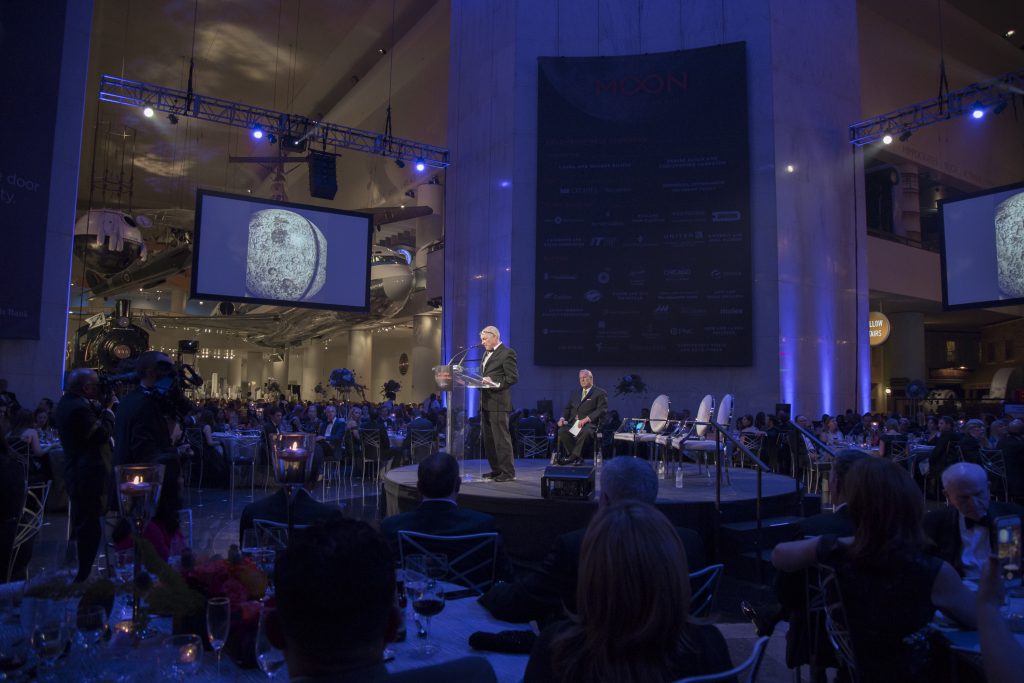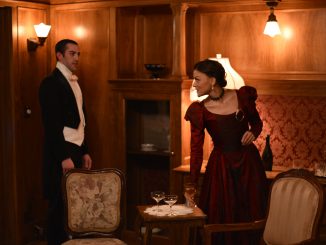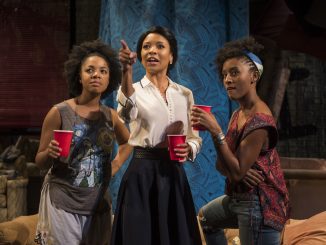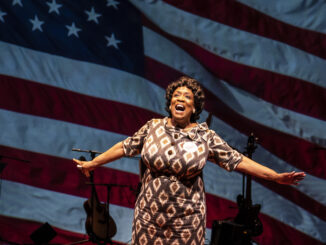
On Saturday evening, October 6, 2018, The Museum of Science and Industry, Chicago (MSI) hosted their 38th annual Columbian Ball turning the museum into a fabulous black-tie tribute, party and dinner in honor of the Apollo 8 astronauts who were the first to leave Earth’s orbit and circle the moon almost half a century ago.
Beautifully dressed people gathered in the Entry Hall of the museum before dinner, bopping to the beat of the DJ E-Six, sipping cocktails, nibbling tasty hors d’ouerves and mingling before moving upstairs for a delicious dinner in the historic Rotunda.
Apollo 8, the second manned spaceflight mission in the United States Apollo Space Program, was launched on December 21, 1968. It became the first manned spacecraft to leave low earth orbit, reach the Earth’s moon, orbit it and return safely to Earth. The three-astronaut crew, Commander Frank Borman, Command Module Pilot James Lovell, and Lunar Module Pilot William Anders became the first humans to travel beyond low Earth’s orbit, see Earth as a whole planet, enter the gravity well of another celestial body (Earth’s moon), orbit another celestial body (Earth’s moon), directly see the far side of the moon with their own eyes, capture Earthrise, (a photograph of Earth and parts of the Moon’s surface taken from lunar orbit), escape the gravity of another celestial body (Earth’s moon), and re-enter the gravitational well of Earth.

Apollo 8 took 68 hours (2.8 days) to travel the distance to the moon. It orbited ten times over the course of 20 hours, during which the crew made a Christmas Eve television broadcast reciting the first 10 verses from the Book of Genesis; at the time, the broadcast was the most watched TV program ever.
Apollo 8’s successful mission paved the way for Apollo 11 to fulfill U.S. President John F. Kennedy’s goal of landing a man on the Moon before the end of the 1960s. The Apollo 8 astronauts returned to Earth on December 27, 1968, when their spacecraft splashed down in the Northern Pacific Ocean. The crew members were named Time Magazine’s “Men of the Year” for 1968 upon their return.
The Columbian Ball is the MSI’s annual celebration of innovation, science and technology. Seven hundred guests attended the Columbian Ball, raising more than $2 million dollars for the Museum’s exciting and inspirational educational programs, exhibits and experiences.
Apollo 8 Crew members Colonel Frank Borman, Captain James Lovell and Major General William Anders attended the Ball as Guests of Honor and engaged in a conversation during dinner with Ball emcee journalist/lawyer Bill Kurtis, who began by noting “We are celebrating one of history’s greatest achievements. All of us here are united in our love and respect for science.” The men discussed the astronauts’ first-hand accounts of launching into space and their hopes for the future of space exploration.
During the evening, Dr. William Sheehan made an announcement for the International Astronomical Union honoring the astronauts by officially naming three features on the Moon after them. He began by noting, “It is essential that the Museum of Science and Industry serves to inspire curiosity and respect for science”.
“Mount Marilyn”, named after James Lovell’s wife of 66 years, is the landmark that the future Apollo 11 astronauts would use when they began their descent to the Moon on July 20, 1969. “Anders’ Earthrise”, a crater spanning nearly 25 miles, was first seen in William Anders’ iconic Earthrise photo image. “8 Homeward” is another crater, named in honor of Frank Borman who successfully managed to bring the spacecraft and crew to the Moon and back to Earth; it can also be seen in the famous Earthrise image.

Today, the Museum’s Henry Crown Space Center is home to the spacecraft that carried the three men to the far side of the moon and back 50 years ago. Columbian Ball guests had the opportunity to see the Apollo 8 command module up close after dinner, also touring the marvelous temporary exhibition “The Science Behind Pixar”, the museum’s famous captured WWII submarine, and other permanent exhibits.
The Ball was co-chaired by Laura and George Bilicic, Denise Dayan and Christopher Lorenzen. Mayor Rahm Emanuel and First Lady Amy Rule served as honorary co-chairs.




Be the first to comment